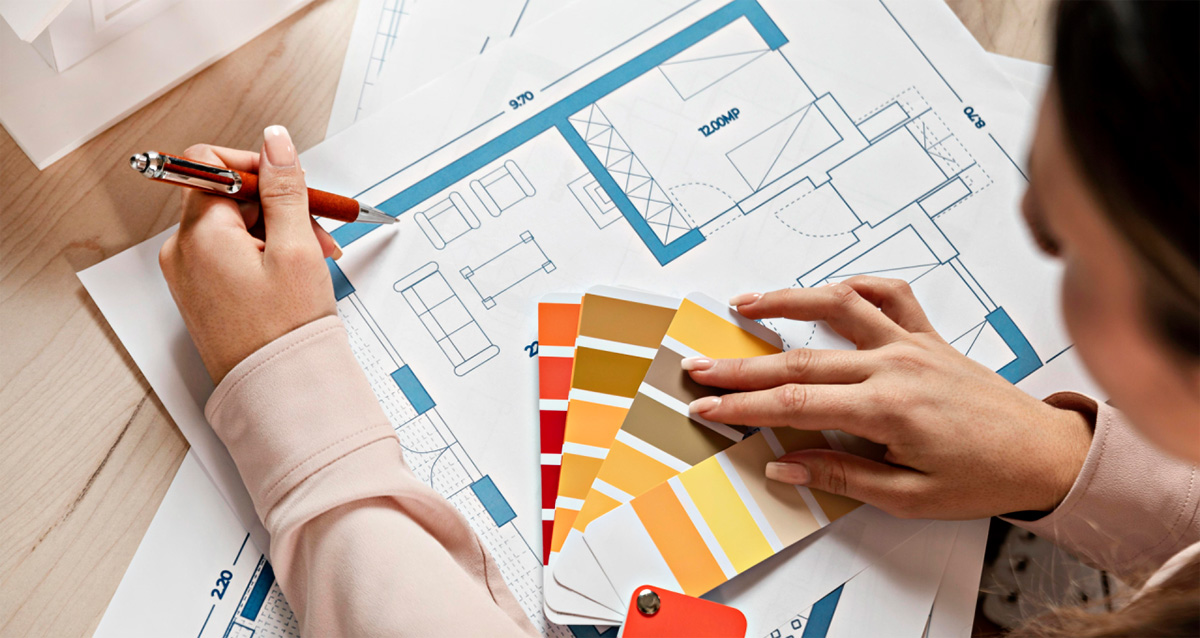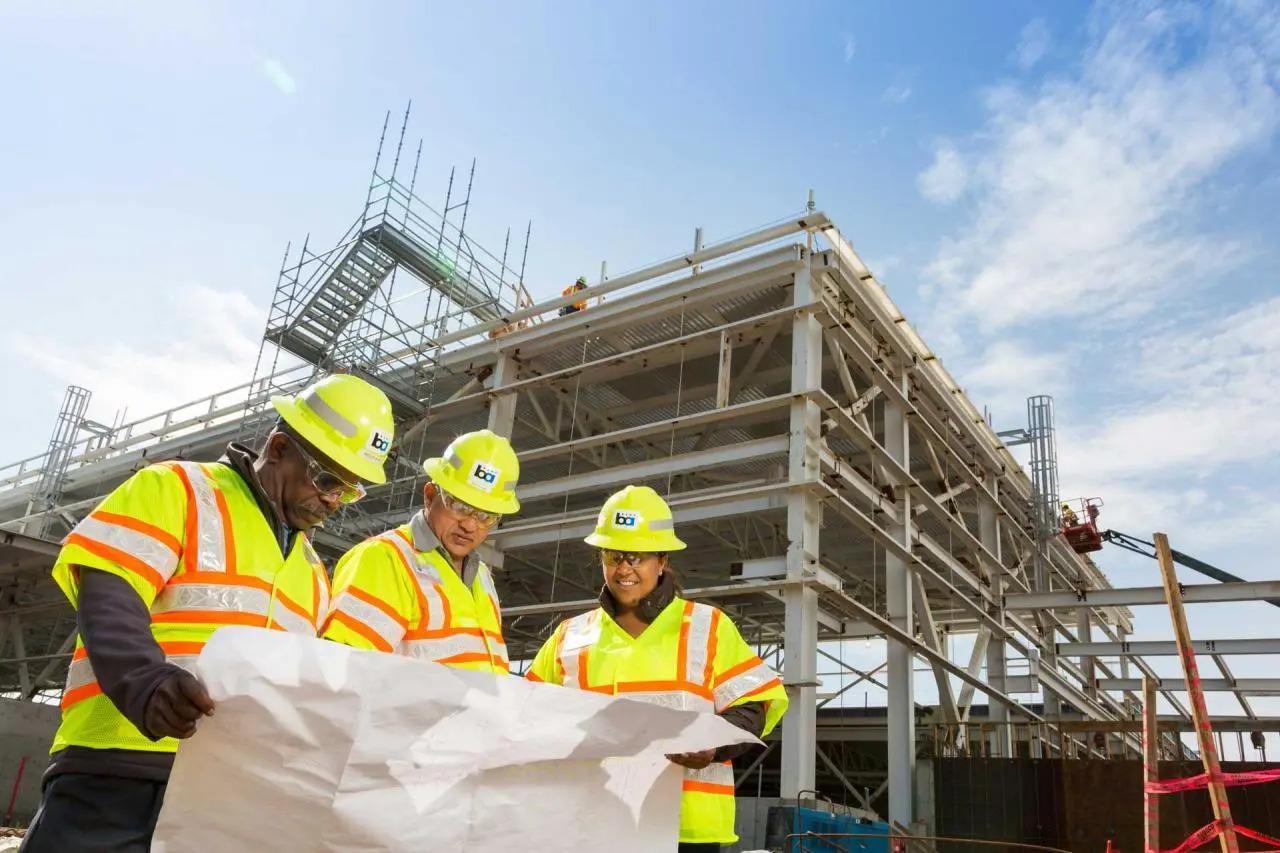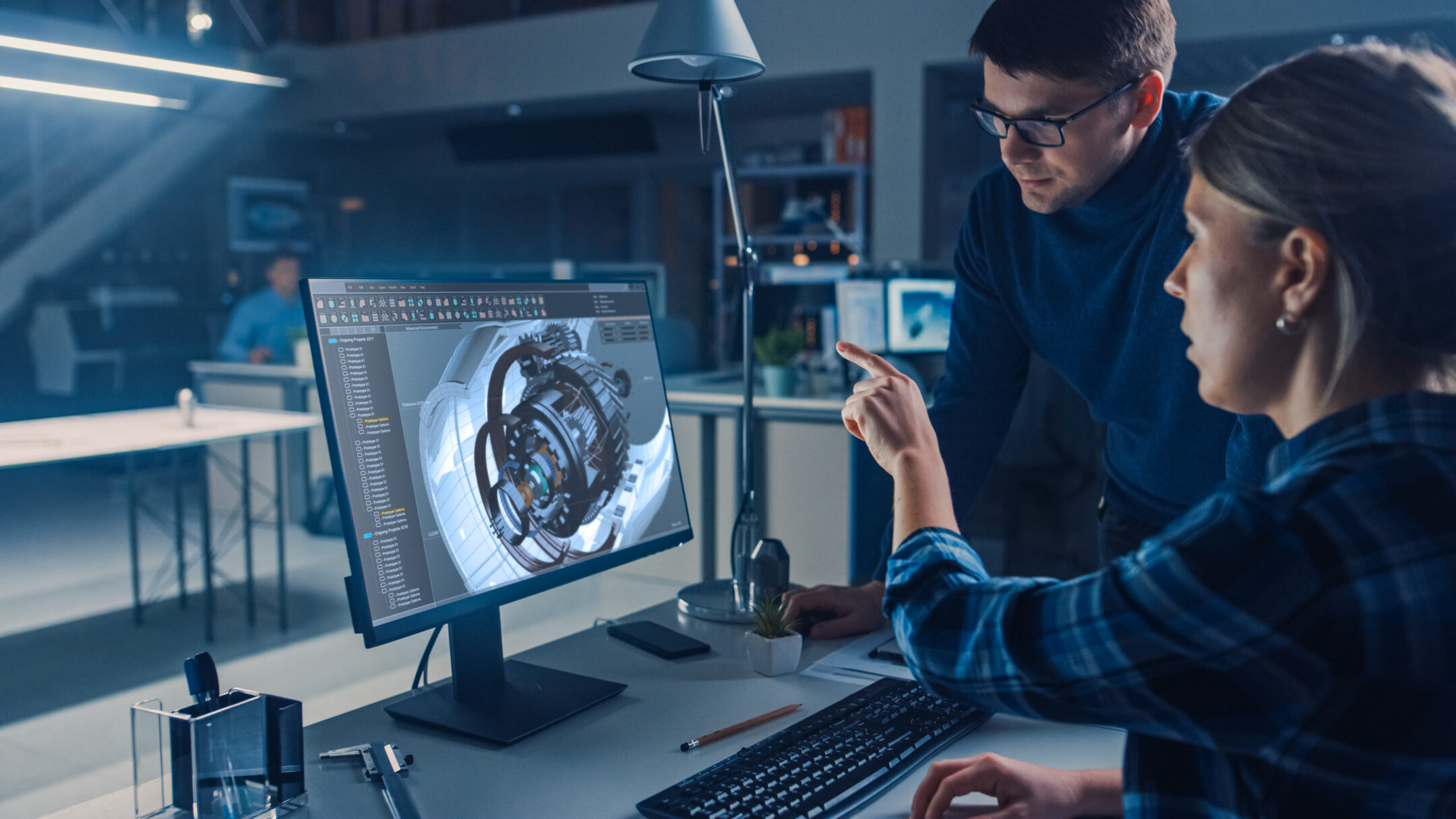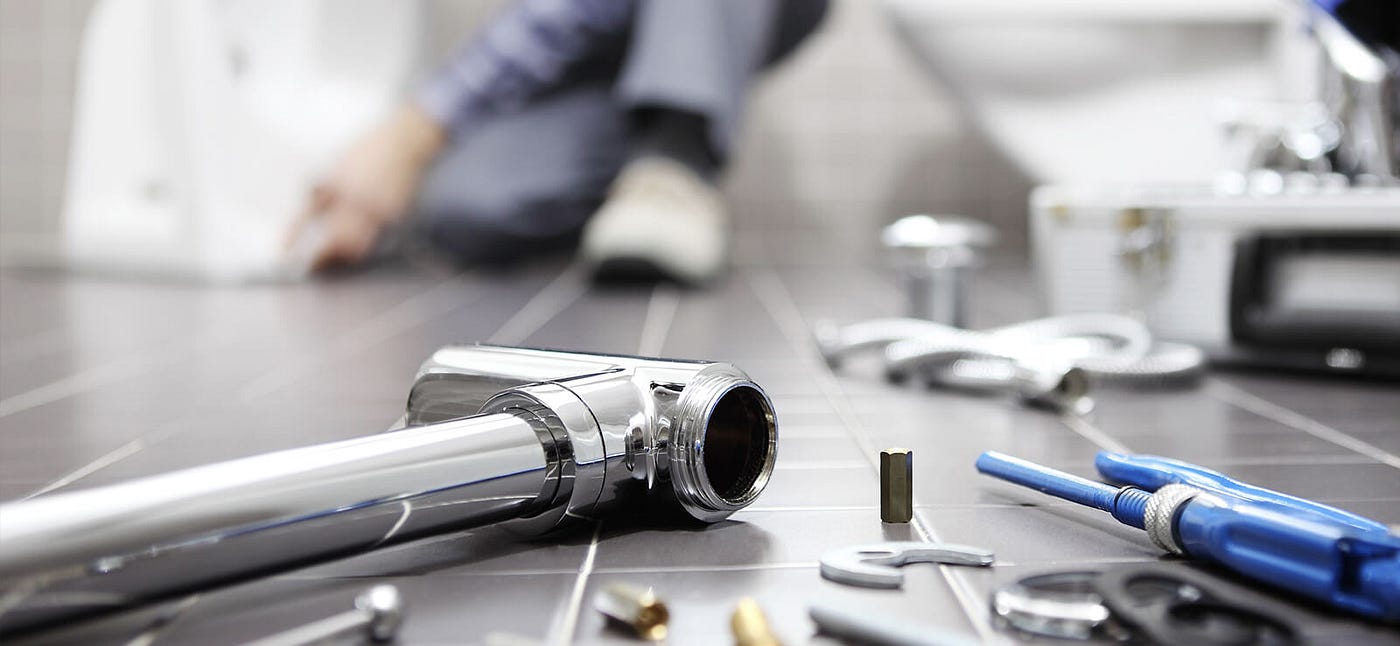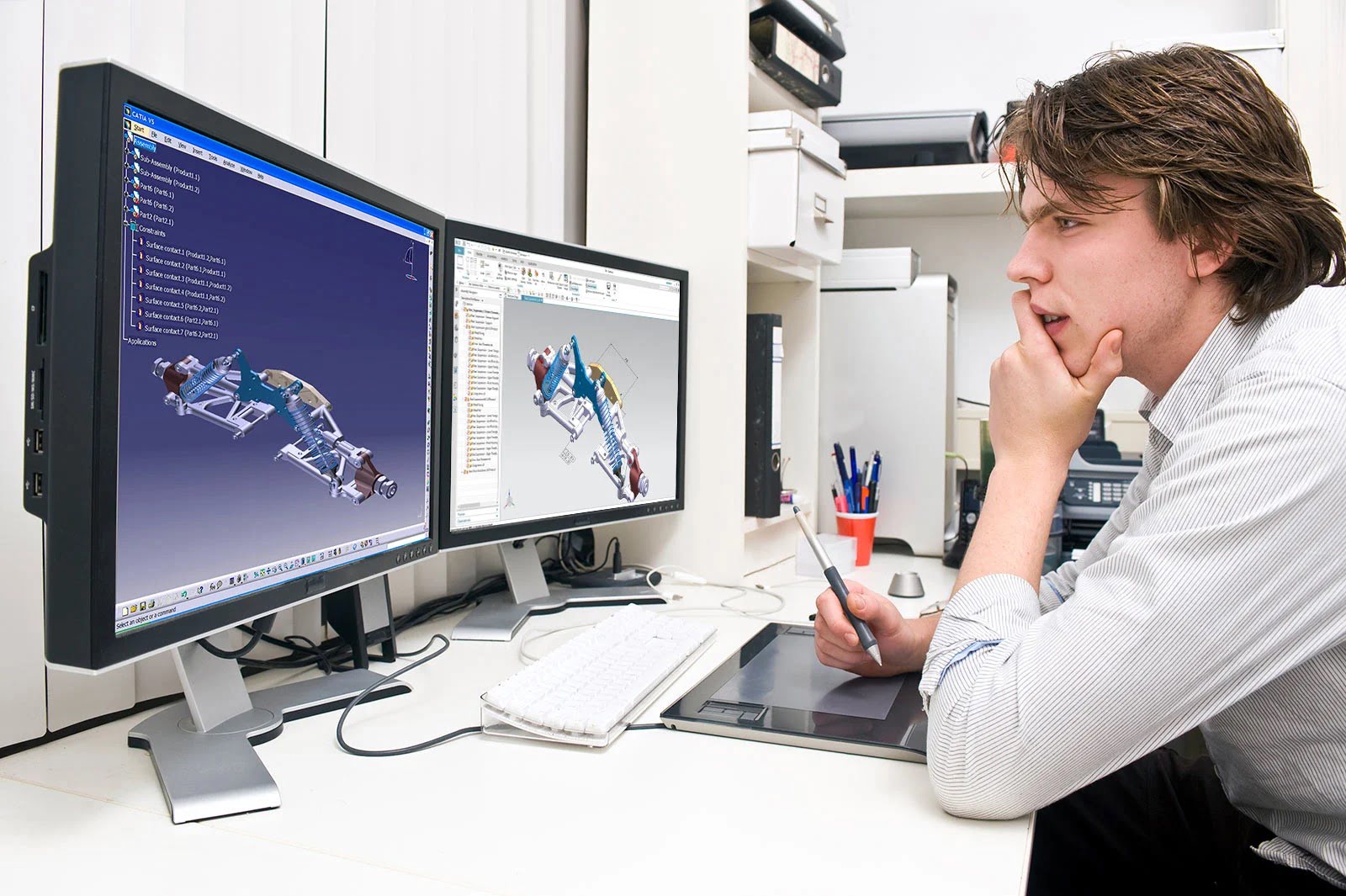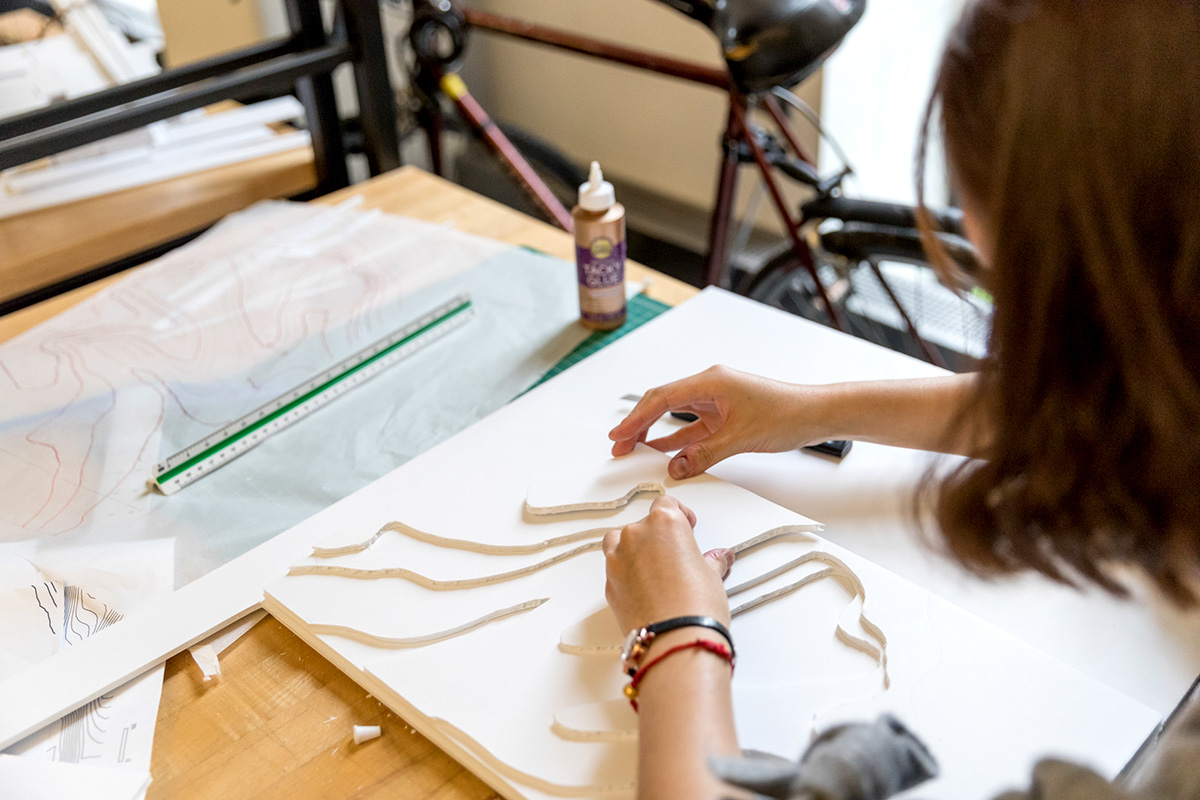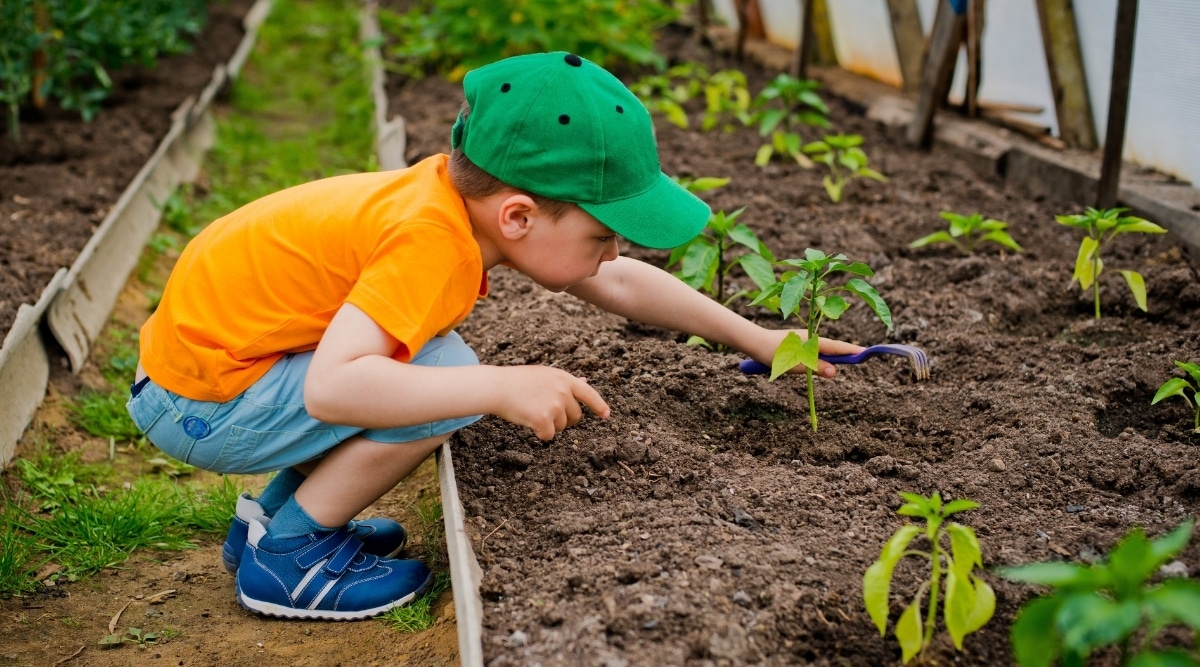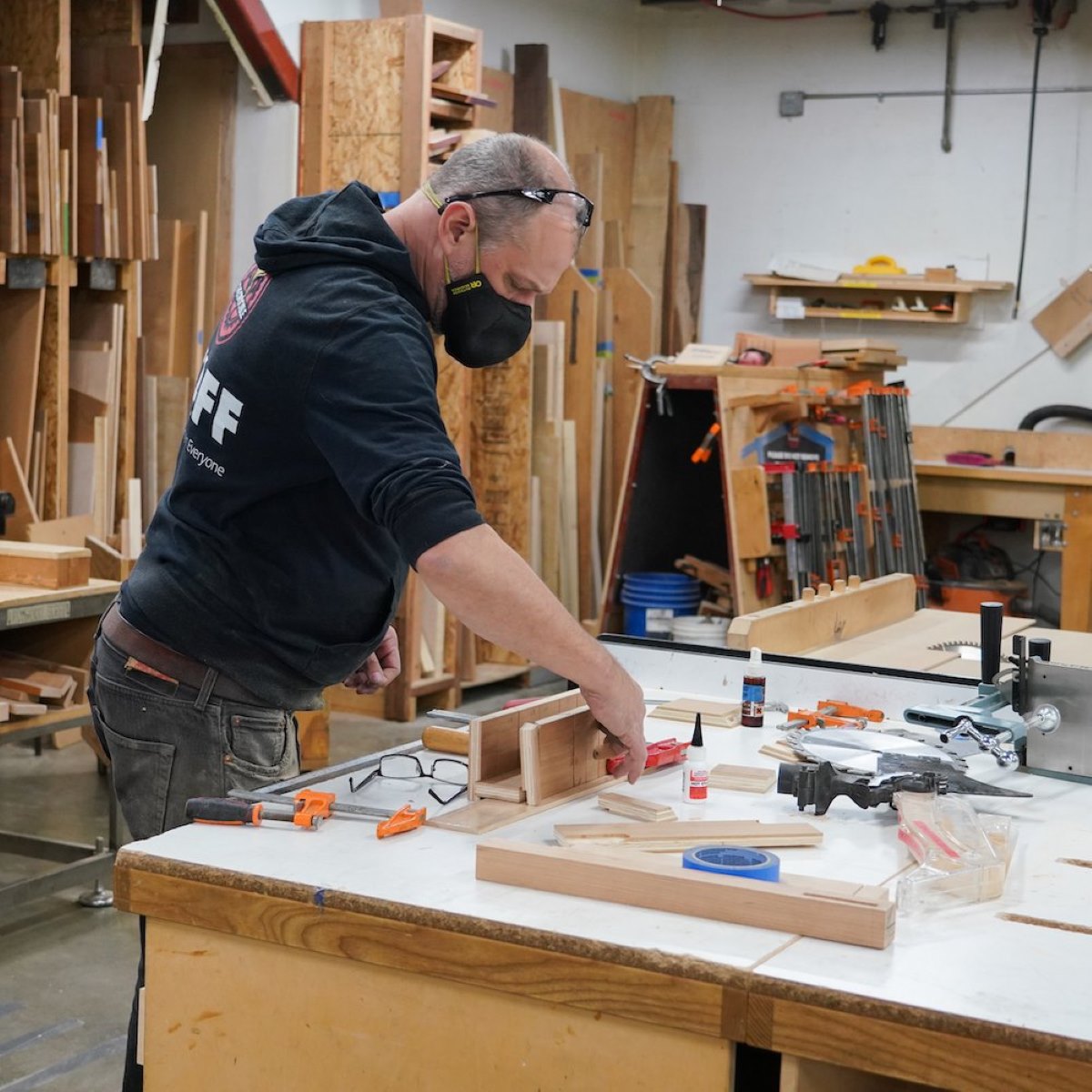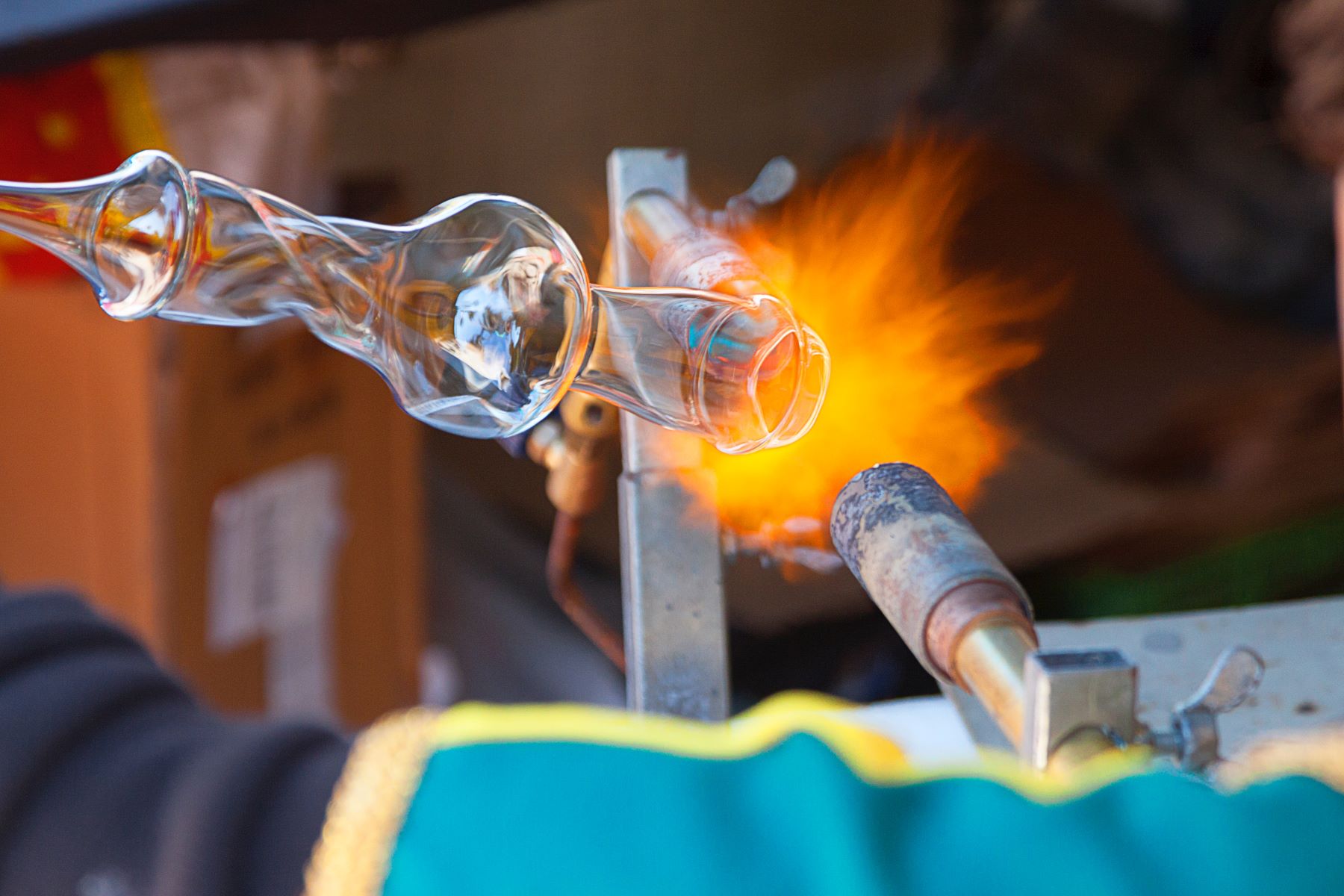Home>Home Maintenance>How To Learn Nursing Home Maintenance
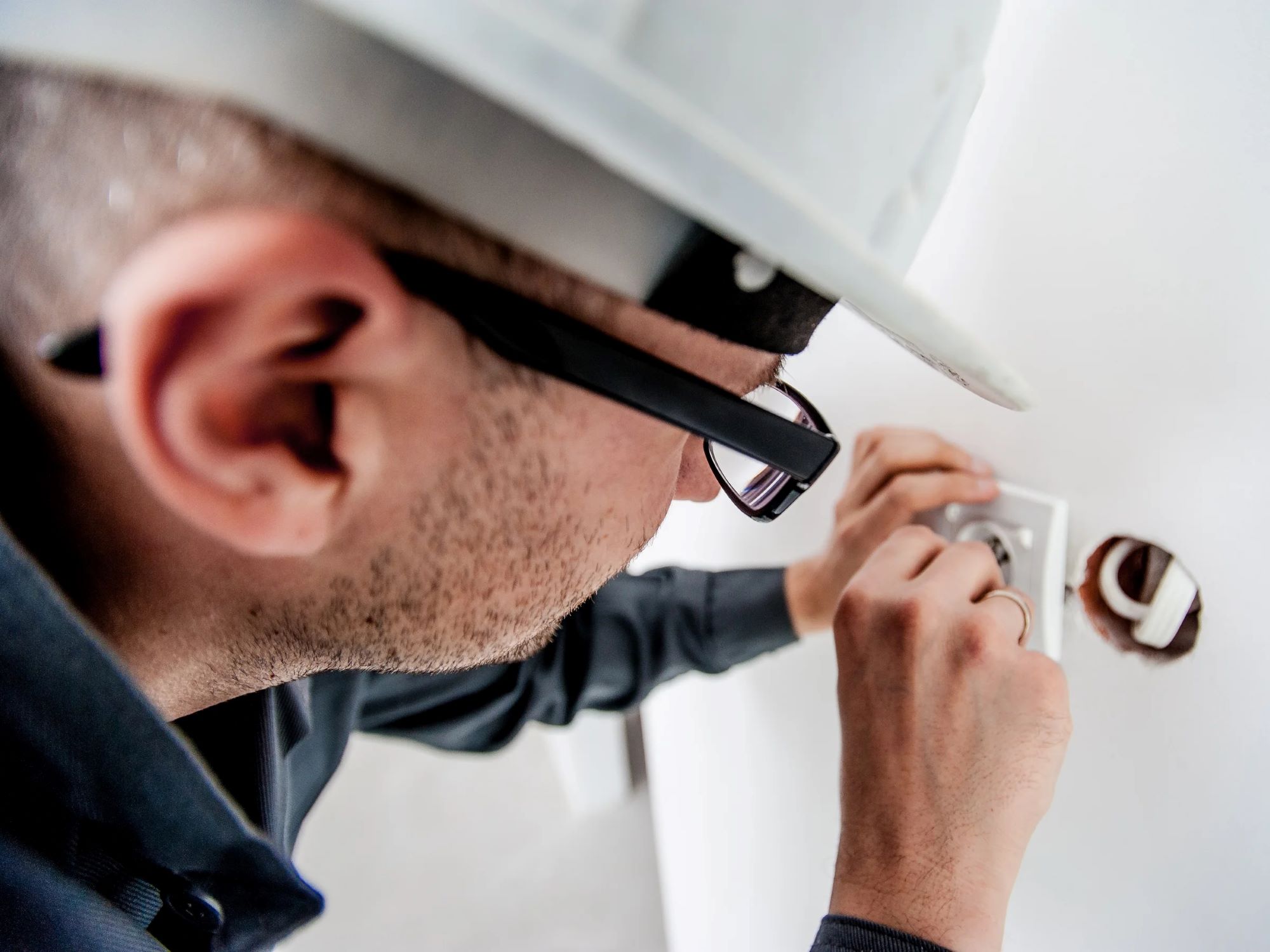

Home Maintenance
How To Learn Nursing Home Maintenance
Modified: March 6, 2024
Discover expert tips on learning nursing home maintenance and ensuring the upkeep of your home. Get valuable insights and techniques for effective home maintenance.
(Many of the links in this article redirect to a specific reviewed product. Your purchase of these products through affiliate links helps to generate commission for Storables.com, at no extra cost. Learn more)
Introduction
Welcome to the world of nursing home maintenance! As an essential part of providing quality care for seniors, ensuring the proper upkeep of nursing home facilities is of utmost importance. From regular maintenance tasks to emergency repairs, maintaining a safe and comfortable environment is crucial for the well-being and happiness of residents.
In this article, we will explore the key aspects of nursing home maintenance, providing you with valuable insights and practical tips to keep your facility in top shape. Whether you are a nursing home administrator, maintenance professional, or simply an individual interested in learning more about home maintenance, this guide will serve as a comprehensive resource to help you navigate the world of nursing home maintenance.
From the basic understanding of maintenance tasks to creating a structured maintenance plan, we will cover all the essential aspects that are essential for smooth operations. We will also delve into the tools and equipment necessary for carrying out maintenance tasks, as well as detailed instructions for some of the most common repairs and maintenance tasks in nursing homes. Additionally, we will address the critical topics of safety and security, cleaning and sanitizing practices, and the importance of training and educating staff.
To ensure that your nursing home remains in optimal condition, we will discuss the importance of regular inspections and assessments. Finally, we will provide guidance on how to handle emergency situations effectively to minimize disruption and ensure the safety of residents.
So, whether you are new to nursing home maintenance or seeking to expand your knowledge and skills, let’s dive into the world of nursing home maintenance and learn how to ensure a safe, comfortable, and well-maintained environment for our elderly residents.
Key Takeaways:
- Regular maintenance, safety inspections, and proper cleaning practices are essential for creating a safe and comfortable environment for elderly residents in nursing homes.
- Training staff, preparing for emergencies, and prioritizing resident well-being are crucial for effective nursing home maintenance and ensuring a high standard of care.
Importance of Nursing Home Maintenance
Maintaining a high standard of maintenance in nursing homes is essential for several reasons. Firstly, it ensures the safety and well-being of the residents. By regularly inspecting and repairing any potential hazards, such as loose handrails, broken equipment, or slippery floors, we can prevent accidents and injuries that could significantly impact the lives of the elderly residents.
Proper maintenance also contributes to the overall comfort of the residents. A well-maintained nursing home provides a clean and pleasant living environment, enhancing the residents’ quality of life. When the facility is well-kept, residents feel more comfortable, at ease, and proud of where they live.
Maintaining the nursing home’s physical appearance is also important for attracting and retaining residents. Prospective residents and their families often base their decisions on the overall condition of the facility. A well-maintained facility creates a positive first impression and instills confidence in families that their loved ones will receive the best care possible.
Furthermore, proper maintenance helps to extend the lifespan of the building and its systems. Regular inspections and timely repairs can prevent minor issues from escalating into major problems, saving time and money in the long run. By addressing maintenance needs promptly, nursing homes can minimize costs associated with extensive repairs and replacements.
Lastly, maintaining a proactive and comprehensive maintenance program ensures compliance with regulatory standards and requirements. Nursing homes are subject to various regulations, including those related to safety, hygiene, and accessibility. By prioritizing maintenance, nursing homes can ensure that they meet and exceed these standards, avoiding potential penalties and legal issues.
In summary, nursing home maintenance plays a critical role in ensuring the safety, comfort, and well-being of residents, attracting and retaining occupants, prolonging the lifespan of the facility, and meeting regulatory standards. By prioritizing maintenance and implementing a comprehensive plan, nursing homes can create an environment that promotes the highest level of care and quality of life for their residents.
Understanding the Basics of Nursing Home Maintenance
Before diving into the world of nursing home maintenance, it is essential to have a basic understanding of the key concepts and tasks involved. Let’s explore the fundamentals:
1. Regular Maintenance: Regular maintenance involves performing routine checks, inspections, and preventive measures to keep the facility in optimal condition. This includes tasks such as checking electrical systems, plumbing, HVAC systems, and maintaining the integrity of the building’s structure.
2. Repairs: Repairs are necessary when issues arise, whether it’s a leaking faucet, a malfunctioning light fixture, or a broken door handle. Promptly addressing repair needs is essential to prevent further damage and ensure the safety and comfort of residents.
3. Painting and Finishing: Applying fresh coats of paint and maintaining a well-finished appearance adds aesthetic value to the nursing home. From refreshing the paint on the walls to refinishing furniture, these tasks contribute to the overall ambiance and atmosphere of the facility.
4. Groundskeeping: Nursing homes often have outdoor areas such as gardens, walking paths, and parking lots. Regular groundskeeping tasks include lawn care, landscaping, snow removal, and general upkeep to maintain a neat and inviting environment for residents and visitors.
5. Equipment and Asset Management: Managing the various equipment and assets in a nursing home is crucial. This involves regular inspections, cleaning, and maintenance of medical equipment, kitchen appliances, laundry machines, elevators, and other machinery to ensure they function properly and safely.
6. Documentation: Keeping accurate records of maintenance activities, repairs, and inspections is essential for regulatory compliance, accountability, and tracking the facility’s maintenance history. This documentation is invaluable for monitoring trends, identifying patterns, and developing effective maintenance strategies.
7. Budgeting: Financial planning and budgeting are integral components of nursing home maintenance. Creating a realistic maintenance budget allows for planned expenses, facilitates proactive maintenance, and ensures that sufficient resources are available to address any unexpected repairs or emergencies.
By understanding and implementing these basic concepts, nursing home administrators and maintenance professionals can lay a solid foundation for effective maintenance practices. A systematic and well-thought-out approach to nursing home maintenance will ensure the facility remains safe, functional, and aesthetically appealing for the benefit of its residents.
Creating a Maintenance Plan for Nursing Homes
A well-designed maintenance plan is the cornerstone of effective nursing home maintenance. It provides a structured approach to ensure that all maintenance tasks, inspections, and repairs are carried out efficiently and on time. Let’s break down the key steps in creating a maintenance plan:
1. Assess the Facility: Begin by conducting a thorough assessment of the nursing home facility. Identify areas that require regular maintenance, such as common areas, resident rooms, bathrooms, kitchens, and outdoor spaces. Take note of any existing issues or potential hazards that need attention.
2. Prioritize Tasks: Once you have assessed the facility, prioritize maintenance tasks based on their urgency, frequency, and impact on resident safety and comfort. Categorize tasks into routine maintenance, preventive maintenance, and corrective repairs.
3. Determine Resource Allocation: Assess the resources available, including staff, tools, and budget, and allocate them accordingly. Ensure that there are sufficient resources to address all maintenance needs effectively. Consider outsourcing certain tasks if necessary, such as specialized repairs or landscaping services.
4. Develop a Schedule: Create a detailed schedule for routine maintenance tasks, inspections, and equipment checks. Assign specific dates and responsible individuals for each task. Incorporate regular intervals for preventive maintenance, such as cleaning HVAC filters, testing emergency systems, and inspecting fire extinguishers.
5. Establish Documentation and Reporting: Implement a system for documenting all maintenance activities, repairs, and inspections. Use digital platforms or paper logs to record the date, nature of the task, individuals involved, and any observations or findings. This documentation will aid in tracking maintenance history and identifying recurring issues.
6. Train and Educate Staff: Ensure that all staff members involved in maintenance receive proper training on safety protocols, equipment usage, and maintenance procedures. Invest in ongoing education to keep staff updated on best practices and new technologies. Encourage staff communication and reporting of maintenance concerns.
7. Regularly Review and Adjust: Maintain an open line of communication with staff and management to address any maintenance challenges or emerging needs. Regularly review the effectiveness of the maintenance plan and make adjustments as necessary, based on resident feedback, staff input, and industry best practices.
By creating a well-structured maintenance plan, nursing homes can proactively manage their maintenance needs, ensure the safety and comfort of residents, and extend the lifespan of their facilities. A comprehensive plan also enhances operational efficiency, reduces costs associated with emergency repairs, and elevates the overall quality of care provided to residents.
Essential Tools and Equipment for Nursing Home Maintenance
Having the right tools and equipment is crucial for effectively carrying out maintenance tasks in a nursing home. Here are some essential tools and equipment that every nursing home maintenance team should have:
1. Basic Hand Tools: A set of basic hand tools is essential for a variety of maintenance tasks. This includes screwdrivers (both flathead and Phillips), pliers, adjustable wrenches, hammers, utility knives, tape measure, and a level.
2. Power Tools: Power tools can greatly enhance efficiency and productivity. Some essential power tools include a drill/driver, circular saw, jigsaw, oscillating multi-tool, and a power sander.
3. Safety Equipment: Safety should always be a top priority. Make sure to have personal protective equipment (PPE) such as safety goggles, gloves, hard hats, and hearing protection readily available. Additionally, fire extinguishers, first aid kits, and safety signage should be easily accessible throughout the facility.
4. Cleaning Supplies: Proper cleaning and sanitization are essential in nursing home maintenance. Stock up on a variety of cleaning supplies such as disinfectants, detergents, mops, brooms, vacuum cleaners, microfiber cloths, and trash bags.
5. Maintenance Carts or Trolleys: Invest in maintenance carts or trolleys to easily transport tools and supplies throughout the facility. This saves time and effort, allowing maintenance staff to efficiently carry out their tasks.
6. Ladders and Step Stools: Nursing homes often have high ceilings and hard-to-reach areas. Having a sturdy ladder or step stool is essential for tasks such as changing light bulbs, accessing storage areas, or conducting inspections at elevated levels.
7. Testing and Diagnostic Tools: Equip your maintenance team with testing and diagnostic tools to identify and troubleshoot issues. This may include a voltage tester, multimeter, thermal imaging camera, and a moisture meter.
8. Gardening Tools: If your nursing home has outdoor spaces or gardens, gardening tools are necessary for groundskeeping. These may include shovels, rakes, pruning shears, hedge trimmers, and a lawnmower.
9. Maintenance Software: Utilize maintenance management software to track work orders, plan maintenance schedules, and store documentation. This software can streamline operations and provide valuable insights into maintenance trends and costs.
Having these essential tools and equipment readily available ensures that maintenance tasks can be carried out efficiently and effectively. Regularly inspect and maintain your tools to ensure they are in good working condition. By investing in quality tools and equipment, you are setting your maintenance team up for success and providing a safe and comfortable environment for the nursing home residents.
Read more: Topics For A Nursing Home Safety Meeting
Basic Repairs and Maintenance Tasks in Nursing Homes
In a nursing home, there are several common repairs and maintenance tasks that need to be addressed regularly. By proactively addressing these issues, you can ensure the safety, comfort, and functionality of the facility. Here are some of the basic repairs and maintenance tasks in nursing homes:
1. Plumbing Repairs: Plumbing issues such as leaky faucets, clogged drains, and running toilets are common in nursing homes. Promptly addressing these repairs is essential to prevent water damage, maintain hygiene, and provide a comfortable living environment for residents.
2. Electrical Repairs: Electrical issues can pose severe safety risks. Repairing faulty outlets, lights, switches, and wiring problems should be a priority. Regularly testing and replacing smoke detectors and carbon monoxide detectors is also crucial for resident safety.
3. HVAC System Maintenance: Regular maintenance of heating, ventilation, and air conditioning (HVAC) systems ensures optimal indoor air quality and comfort. This includes cleaning or replacing air filters, checking thermostat settings, and scheduling professional HVAC inspections and maintenance.
4. Door and Window Repairs: Doors and windows that are not functioning properly can compromise security, energy efficiency, and resident safety. Repairing or replacing broken or damaged locks, hinges, and weatherstripping is essential for proper functioning and insulation.
5. Flooring Maintenance: Regular cleaning, repair, and maintenance of the flooring are important for preventing slips, trips, and falls. This includes replacing worn-out carpets, repairing loose tiles, and ensuring that floor surfaces are free from hazards and properly maintained.
6. Paint Touch-ups: Regular touch-ups and repainting of walls can enhance the overall appearance of the facility and create a fresh and inviting atmosphere. Addressing scuffs, stains, and chipped paint helps maintain a clean and well-maintained environment for residents.
7. Furniture Repairs: Repairing or replacing furniture that is damaged or worn out not only improves the aesthetics of the facility but also ensures the comfort and safety of residents. Addressing loose or broken chairs, tables, and beds promptly is crucial.
8. Pest Control: Implementing a proactive pest control program is essential for maintaining a clean and hygienic environment. Regular inspections, sealing entry points, and prompt treatment of any pest infestations are necessary to protect residents and staff.
9. General Maintenance Tasks: Regularly inspect the facility for any issues that may arise, such as loose handrails, cracked walls, or malfunctioning equipment. Proactively addressing these general maintenance tasks can prevent further damage and ensure the well-being of residents.
By addressing these basic repairs and maintenance tasks in a timely manner, nursing homes can provide a safe, comfortable, and well-maintained environment for their residents. Regular inspections and proactive maintenance practices are key to identifying and resolving issues before they escalate into more significant problems.
Tip: To learn nursing home maintenance, seek out training programs or courses specifically designed for maintenance in healthcare facilities. Look for hands-on experience and mentorship opportunities to gain practical skills.
Ensuring Safety and Security in Nursing Homes
Safety and security are top priorities in nursing homes to provide a secure and comfortable environment for residents. Here are essential measures to ensure safety and security in nursing homes:
1. Security Systems: Install comprehensive security systems that include surveillance cameras, access control systems, and alarms. These systems help monitor and control entry and exit points, deter potential intruders, and provide a sense of security for residents and staff.
2. Emergency Preparedness: Develop and regularly review emergency preparedness plans to address potential threats such as fires, natural disasters, or medical emergencies. Conduct drills and training sessions for staff and educate residents on emergency procedures to ensure a quick and efficient response.
3. Fall Prevention Measures: Falls can result in severe injuries for seniors. Implement fall prevention measures, such as installing handrails in hallways, ensuring proper lighting, removing trip hazards, and providing residents with nonslip footwear to minimize the risk of falls.
4. Adequate Lighting: Well-lit common areas, hallways, and outdoor spaces are essential for visibility and preventing accidents. Regularly check and replace bulbs to maintain proper lighting throughout the facility.
5. Medication Safety: Establish strict protocols for medication management, including accurate administration, proper storage, and regular medication reviews. These measures reduce the risk of medication errors and ensure the safety and well-being of residents.
6. Regular Maintenance Inspections: Conduct regular inspections of the facility to identify potential safety hazards. This includes checking for loose handrails, uneven flooring, malfunctioning equipment, and addressing any issues promptly to prevent accidents or injuries.
7. Fire Safety: Install and regularly maintain fire detection systems, including smoke alarms and fire extinguishers. Train staff on fire safety procedures, conduct regular fire drills, and ensure that exit routes are clearly marked and accessible at all times.
8. Resident Monitoring: Implement a system to monitor residents, especially those at risk of wandering or experiencing confusion or memory loss. This may include wearable devices and door alarms to ensure their safety and prevent potential accidents.
9. Staff Training and Background Checks: In addition to providing proper training on safety protocols and emergency procedures, conduct thorough background checks and screening for all staff members to ensure their fitness for working in a caregiving environment.
10. Regular Communication: Foster open communication between staff, residents, and their families to address any safety concerns promptly. Encourage reporting of potential hazards, incidents, or suspicious activities to maintain a safe and secure environment.
By implementing these safety and security measures, nursing homes can create an environment where residents feel secure and well-cared for. Continuous assessment, training, and improvement are vital to ensuring the safety and security of everyone within the facility.
Cleaning and Sanitizing Practices for Nursing Home Maintenance
Cleaning and sanitizing are essential components of nursing home maintenance to create a safe and healthy environment for residents, staff, and visitors. Here are important practices to follow:
1. Develop a Cleaning Schedule: Create a comprehensive cleaning schedule that outlines daily, weekly, and monthly cleaning tasks. Assign specific responsibilities to staff members to ensure all areas of the facility are regularly cleaned and sanitized.
2. Use Appropriate Cleaning Products: Select cleaning products that are effective against a wide spectrum of pathogens and safe for use in healthcare environments. Ensure staff members are trained on proper product usage and that all cleaning supplies are labeled and stored securely.
3. Focus on High-Touch Surfaces: Pay special attention to high-touch surfaces such as doorknobs, handrails, light switches, elevator buttons, and common area furniture. These surfaces should be cleaned and sanitized multiple times a day to prevent the spread of germs.
4. Pay Attention to Restrooms: Regularly clean and disinfect restrooms throughout the day. Ensure that sinks, toilets, and floors are thoroughly cleaned and that hand sanitizers or soap dispensers are always stocked.
5. Kitchen and Dining Area Hygiene: Maintain proper hygiene in kitchen and dining areas by cleaning countertops, sinks, and food preparation surfaces regularly. Follow food safety guidelines, ensure proper dishwashing procedures, and monitor the temperature control of refrigerators and freezers.
6. Laundering and Linen Care: Follow strict procedures for laundering bedding, towels, and other linens. Use hot water and detergent to ensure proper sanitization. Regularly replace and discard worn or damaged linens to maintain cleanliness and prevent the spread of infections.
7. Floor Cleaning and Maintenance: Regularly vacuum, sweep, and mop all types of flooring throughout the facility. Use appropriate cleaning methods for different floor surfaces, paying extra attention to spills and stains. Periodically clean and polish hard floors to maintain their appearance.
8. Incorporate Deep Cleaning: Schedule deep cleaning sessions for certain areas on a quarterly or biannual basis. This may include carpet cleaning, window washing, and other tasks that require specialized equipment or expertise.
9. Encourage Hand Hygiene: Promote regular handwashing among residents, staff, and visitors. Ensure that hand sanitizer dispensers are readily available in common areas, entrances, and resident rooms. Educate everyone on proper handwashing techniques and the importance of hand hygiene in preventing the spread of infections.
10. Stay Informed About Best Practices: Stay updated with industry guidelines and recommendations for cleaning and sanitizing in healthcare settings. Regularly review and modify cleaning protocols based on new information and best practices.
By following these cleaning and sanitizing practices, nursing homes can create a clean and hygienic environment that promotes the health and well-being of residents and staff. Regular cleaning, proper product usage, and adherence to strict protocols are essential for maintaining a safe and comfortable environment within the facility.
Training and Educating Staff for Effective Nursing Home Maintenance
Proper training and education of staff members are crucial for maintaining a high standard of nursing home maintenance. Here are important considerations for training and educating staff:
1. Orientation and Onboarding: Provide a comprehensive orientation program for new staff members that includes an overview of maintenance protocols, safety procedures, and facility-specific maintenance requirements. This ensures that new employees understand their roles and responsibilities from the start.
2. Safety Training: Safety should be a top priority in nursing home maintenance. Train staff on safety procedures, including proper handling of tools and equipment, correct usage of personal protective equipment, and emergency response protocols.
3. Maintenance Procedures: Conduct regular training sessions to educate staff on maintenance procedures specific to the nursing home facility. This may include instruction on plumbing repairs, electrical maintenance, HVAC system checks, and landscaping tasks. Provide hands-on training to ensure proper execution of maintenance procedures.
4. Chemical Handling and Usage: Properly educate staff members on the safe handling and usage of cleaning chemicals, disinfectants, and other maintenance products. Emphasize the importance of following manufacturer instructions, using personal protective equipment, and properly storing and labeling cleaning supplies.
5. Infection Control Practices: Train staff on infection control protocols, including proper hand hygiene, use of personal protective equipment, and cleaning and sanitizing techniques. Reinforce the importance of following infection control guidelines to prevent the spread of infections within the facility.
6. Continuing Education: Encourage staff members to pursue ongoing education and professional development opportunities in the field of nursing home maintenance. Provide access to webinars, workshops, and conferences to keep staff updated on the latest best practices, regulations, and industry trends.
7. Communication and Reporting: Train staff on the importance of communication and reporting in nursing home maintenance. Encourage them to promptly report any maintenance needs or safety concerns they observe, and establish a clear communication channel for staff to communicate with the maintenance department effectively.
8. Collaboration with Other Departments: Foster collaboration and cross-training opportunities between maintenance staff and other departments within the nursing home. This encourages a holistic understanding of the facility’s operations and ensures effective communication and teamwork.
9. Performance Evaluation: Regularly evaluate staff performance in maintenance tasks, providing constructive feedback and identifying areas for improvement. Recognize and reward staff members who demonstrate exceptional skills and dedication to maintaining the facility.
10. Compliance with Regulations: Ensure staff members are aware of and comply with relevant regulations and standards related to nursing home maintenance. This includes topics such as safety codes, infection control guidelines, and building maintenance regulations.
By investing in the training and education of staff members, nursing homes can improve the overall quality of maintenance services provided. Well-trained staff members are equipped with the knowledge and skills to effectively carry out maintenance tasks, promote safety and infection control, and contribute to a positive resident experience.
Read more: How To Learn DIY Home Renovation
Regular Inspections and Assessments for Nursing Home Maintenance
Regular inspections and assessments are vital components of nursing home maintenance to ensure that the facility is well-maintained and meets regulatory standards. These inspections help identify maintenance needs, address potential hazards, and maintain a safe and comfortable environment for residents. Here’s a breakdown of regular inspections and assessments for nursing home maintenance:
1. Routine Facility Inspections: Conduct regular inspections of the entire facility to identify any maintenance issues, safety hazards, or potential risks. This includes checking the condition of walls, floors, ceilings, doors, windows, and other structural elements. Inspect for signs of wear and tear, water damage, mold, or pest infestations.
2. Equipment Inspections: Regularly inspect and assess the condition of medical equipment, kitchen appliances, HVAC systems, elevators, and other machinery. Ensure that they are functioning properly, cleaned, and well-maintained. Follow manufacturer guidelines for scheduled maintenance and inspections.
3. Safety Inspections: Conduct regular safety inspections to identify potential hazards and ensure compliance with safety regulations. This includes checking fire suppression systems, emergency exits, signage, lighting, and the overall safety of resident rooms, common areas, and outdoor spaces.
4. Plumbing and Electrical Inspections: Inspect plumbing systems regularly to check for leaks, clogs, or faulty fixtures. Assess the electrical infrastructure, outlets, switches, and wiring for any potential electrical hazards or malfunctioning components. These inspections help prevent water damage, electrical accidents, and ensure resident safety.
5. Fire Safety Inspections: Conduct regular fire safety inspections to assess the condition and functionality of fire detection systems, smoke alarms, fire extinguishers, sprinkler systems, and emergency lighting. Ensure that all systems are in good working order, appropriate signage is in place, and emergency routes are free from obstructions.
6. Accessibility Assessments: Regularly assess accessibility features throughout the facility to ensure compliance with regulations. Check ramps, handrails, doorways, bathrooms, and other areas to verify that they are accessible and accommodating for residents with mobility challenges.
7. Environmental Assessments: Periodically assess the indoor environment for air quality, temperature control, humidity levels, and ventilation. Ensure that HVAC systems are functioning properly and that adequate measures are in place to prevent mold growth and maintain optimal thermal comfort for residents.
8. Infection Control Audits: Regularly audit and assess infection control practices, including hand hygiene, cleaning and disinfection protocols, and proper handling of contaminated materials. These audits help identify areas for improvement and ensure compliance with infection control guidelines to safeguard resident health.
9. Resident Satisfaction Surveys: Obtain feedback from residents and their families through satisfaction surveys. Use this feedback to identify areas for improvement in the facility’s maintenance and overall quality of care. Address any concerns or suggestions raised by residents to enhance their living experience.
10. Documentation and Follow-Up: Document all inspection findings, assessments, and corrective actions taken. Create a system for follow-up to ensure that identified issues are addressed in a timely manner. Regularly review inspection reports and ensure that all necessary repairs and maintenance tasks are completed.
Regular inspections and assessments play a crucial role in maintaining a safe and well-functioning nursing home facility. By identifying and addressing maintenance needs promptly, nursing homes can enhance resident safety, comply with regulatory standards, and provide a comfortable and enjoyable living environment for residents.
Dealing with Emergency Situations in Nursing Homes
In a nursing home setting, being prepared and knowing how to respond to emergency situations is of utmost importance. Here are essential considerations for dealing with emergency situations:
1. Develop an Emergency Response Plan: Create a comprehensive emergency response plan that outlines procedures for various types of emergencies, including fires, natural disasters, medical emergencies, power outages, and lockdown situations. Ensure that all staff members are familiar with the plan and know their roles and responsibilities.
2. Conduct Drills and Training: Regularly conduct drills and training sessions to practice emergency protocols. This includes fire drills, evacuation exercises, and medical emergency simulations. Make sure all staff members are trained in CPR, first aid, and the proper use of emergency equipment.
3. Establish Communication Protocols: Have a reliable communication system in place to quickly and effectively communicate emergency situations to staff members, residents, and emergency responders. This may include designated alarm systems, intercoms, and emergency communication devices.
4. Evacuation Planning: Develop detailed evacuation plans for different areas of the facility, considering the mobility and special needs of residents. Identify designated evacuation routes, assembly areas, and methods for safely transporting residents, including those with mobility challenges.
5. Coordinate with Local Authorities: Establish relationships with local emergency services, such as fire departments and ambulance services. Share the nursing home’s emergency response plan with them and ensure they are familiar with the facility’s layout in case of emergency situations.
6. Medical Emergency Response: Have medical emergency response kits readily available and accessible throughout the facility. Train staff members on how to respond to common medical emergencies, such as heart attacks, strokes, falls, and respiratory distress. Encourage staff to stay calm and follow established protocols.
7. Power Outages: Have backup generators and emergency lighting systems installed to maintain essential services during a power outage. Conduct routine maintenance and testing of these systems to ensure their proper functioning when needed.
8. Address Resident Anxiety and Support: During emergency situations, residents may experience heightened anxiety or stress. Provide reassurance, clear communication, and emotional support to help alleviate their fears. Assign staff members to comfort and assist residents during emergencies.
9. Document and Review: After each emergency situation, conduct a thorough review and debriefing session to evaluate the effectiveness of the response and identify areas for improvement. Update emergency response plans and training materials based on lessons learned.
10. Maintain Emergency Supplies: Regularly check and restock emergency supplies, including first aid kits, medications, food, water, blankets, and other essential items. Ensure that these supplies are easily accessible and stored in designated locations for quick access during emergencies.
By following these guidelines and being well-prepared, nursing homes can effectively handle emergency situations, ensuring the safety and well-being of residents and staff members. Regular training, communication, and preparedness are key to mitigating risks and providing a secure environment for everyone in the facility.
Conclusion
Nursing home maintenance is a vital component of providing a safe and comfortable environment for elderly residents. By understanding the basics of maintenance tasks, creating a maintenance plan, and equipping staff with proper tools and knowledge, nursing homes can ensure effective maintenance practices.
The importance of regular inspections and assessments cannot be overstated. By conducting routine facility inspections, equipment checks, and safety evaluations, nursing homes can identify maintenance needs, address potential hazards, and maintain a high standard of care. This includes implementing proper cleaning and sanitizing practices to prevent the spread of infections and ensure a healthy living environment.
Training and educating staff members are essential for successful nursing home maintenance. By providing comprehensive orientation, ongoing training, and continuous education opportunities, staff members are equipped with the necessary skills to carry out maintenance tasks effectively and contribute to the overall well-being of residents.
Dealing with emergency situations is another critical aspect of nursing home maintenance. Establishing emergency response plans, conducting drills, and coordinating with local authorities are all crucial steps in ensuring a prompt and effective response. By being well-prepared and practicing emergency protocols, nursing homes can mitigate risks and protect the safety of residents and staff members.
In conclusion, nursing home maintenance requires a proactive and comprehensive approach. By prioritizing regular maintenance, addressing repairs promptly, and adhering to safety standards, nursing homes create a safe, comfortable, and well-maintained environment for their residents. The commitment to ongoing training, communication, and preparedness ensures that the facility operates at its best and provides the highest level of care for the elderly residents who call it home.
Frequently Asked Questions about How To Learn Nursing Home Maintenance
Was this page helpful?
At Storables.com, we guarantee accurate and reliable information. Our content, validated by Expert Board Contributors, is crafted following stringent Editorial Policies. We're committed to providing you with well-researched, expert-backed insights for all your informational needs.

